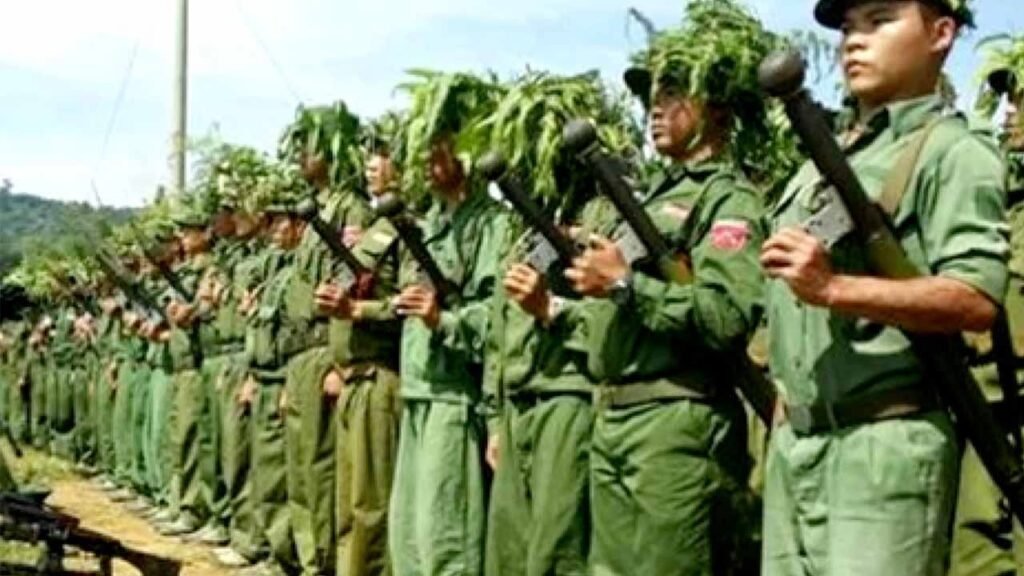In a diplomatic effort to quell escalating tensions, China has stepped in as a mediator, brokering a truce in northern Myanmar. However, despite these peace talks, the situation remains grim in other areas, with no signs of a let-up in the ongoing conflict. The intricacies of the geopolitical landscape and historical tensions contribute to the complexity of the situation.
The Northern Truce: A Fragile Respite
China’s intervention has led to a temporary cessation of hostilities in northern Myanmar. The truce, negotiated through diplomatic channels, aims to create a breathing space for dialogue and negotiations between conflicting parties. However, the fragility of this respite is evident, as deep-rooted issues and historical grievances continue to simmer beneath the surface.
The northern region has been a hotspot for clashes between ethnic groups and government forces, leading to displacement, loss of life, and a humanitarian crisis. China’s role as a mediator reflects its strategic interests in maintaining stability along its border and preventing spillover effects that could impact its own security.
Challenges in Brokering Peace: Geopolitical Complexities
While the truce in the north offers a glimpse of hope, the broader context of Myanmar’s complex geopolitical landscape presents significant challenges to achieving lasting peace. The diverse ethnic composition of the country, historical animosities, and the struggle for political power contribute to the intricacies of the conflict.
China’s involvement in peace talks is also nuanced by its economic interests in the region. Myanmar serves as a crucial component of China’s Belt and Road Initiative, making stability in the area essential for the success of large-scale infrastructure projects. Balancing economic interests with the intricacies of local conflicts poses a delicate diplomatic challenge for China.
Persistent Conflict in Other Areas: A Bleak Reality
While diplomatic efforts focus on the northern region, other parts of Myanmar continue to witness unrelenting conflict. Clashes between armed groups, ethnic minorities, and government forces persist, resulting in a dire humanitarian situation. Displacement, lack of access to essential services, and a growing refugee crisis compound the challenges faced by the affected populations.

The absence of a comprehensive nationwide ceasefire agreement underscores the difficulty of reaching consensus among the diverse stakeholders involved. Ethnic tensions, longstanding grievances, and a complex political landscape contribute to the persistent state of conflict in Myanmar.
International Response: Calls for De-escalation and Dialogue
The international community has responded to the situation in Myanmar with calls for de-escalation and a renewed commitment to dialogue. Various nations and organizations emphasize the importance of addressing the root causes of the conflict, fostering inclusivity, and working towards a sustainable political solution.
Efforts by neighboring countries, including China, to play a constructive role in facilitating peace talks are acknowledged. However, the path to lasting peace requires a multifaceted approach that addresses not only the immediate cessation of hostilities but also the underlying factors contributing to the conflict.
The Road Ahead: Navigating Challenges for Lasting Peace
As China brokers a truce in northern Myanmar, the challenges for achieving lasting peace across the entire nation loom large. Navigating the complex web of historical, political, and economic factors requires a concerted effort from all stakeholders. International support, diplomatic initiatives, and a commitment to inclusive dialogue are imperative for building a foundation for sustainable peace.
The people of Myanmar, caught in the crossfire of conflict, deserve more than temporary respites. The road ahead is challenging, but the pursuit of peace remains essential for the well-being and future prosperity of the nation. The international community, including regional players like China, must remain engaged in efforts that address the root causes of the conflict and pave the way for a more stable and harmonious Myanmar.
Regional Dynamics: Impact on Neighboring Countries
The spillover effects of Myanmar’s internal conflicts extend beyond its borders, impacting neighboring countries. The influx of refugees, cross-border movements, and the potential for regional instability create a shared concern among countries in the vicinity. The need for coordinated regional efforts to address the root causes of the conflict and promote stability is paramount.
China, as a key player in the region, holds a unique position in influencing Myanmar’s trajectory. While brokering a truce in the north is a positive step, a comprehensive regional strategy is essential to address the interconnected challenges that Myanmar poses to its neighbors. Regional cooperation can pave the way for sustainable solutions that go beyond immediate ceasefire agreements.
Humanitarian Crisis: Urgent Need for Aid and Assistance
The protracted conflict in Myanmar has resulted in a severe humanitarian crisis, with widespread displacement and a lack of access to essential services. The international community, including humanitarian organizations, faces the urgent task of providing aid and assistance to those affected by the conflict. The delivery of humanitarian aid must navigate the complexities of the conflict to reach vulnerable populations in need.
Efforts to address the humanitarian crisis should not only focus on immediate relief but also on long-term development strategies that empower affected communities. Education, healthcare, and economic opportunities are crucial components of rebuilding the lives of those impacted by conflict, contributing to the overall stability of the region.
International Diplomacy: Coordinated Action for Peace
The situation in Myanmar demands a united front from the international community in promoting peace and stability. Diplomatic initiatives, backed by a collective commitment to dialogue and conflict resolution, can play a pivotal role in shaping the country’s future. The United Nations and regional organizations must collaborate to foster an environment conducive to inclusive negotiations and political reconciliation.
Sanctions, if deemed necessary, should be carefully calibrated to target those responsible for perpetuating the conflict while minimizing adverse effects on the general population. International pressure, when applied strategically, can encourage all parties involved to come to the negotiating table and work towards a sustainable peace.
Public Awareness: Shining a Light on Myanmar’s Plight
Raising global awareness about the complexities of the Myanmar conflict is essential for garnering support and mobilizing resources. Through informed public discourse, individuals, organizations, and governments can contribute to shaping a more nuanced understanding of the challenges faced by the people of Myanmar. Social media, news outlets, and advocacy campaigns play a crucial role in amplifying the voices of those affected and fostering international solidarity.



